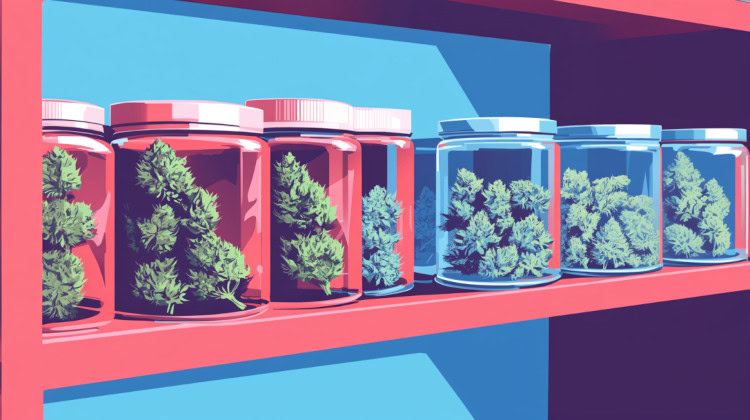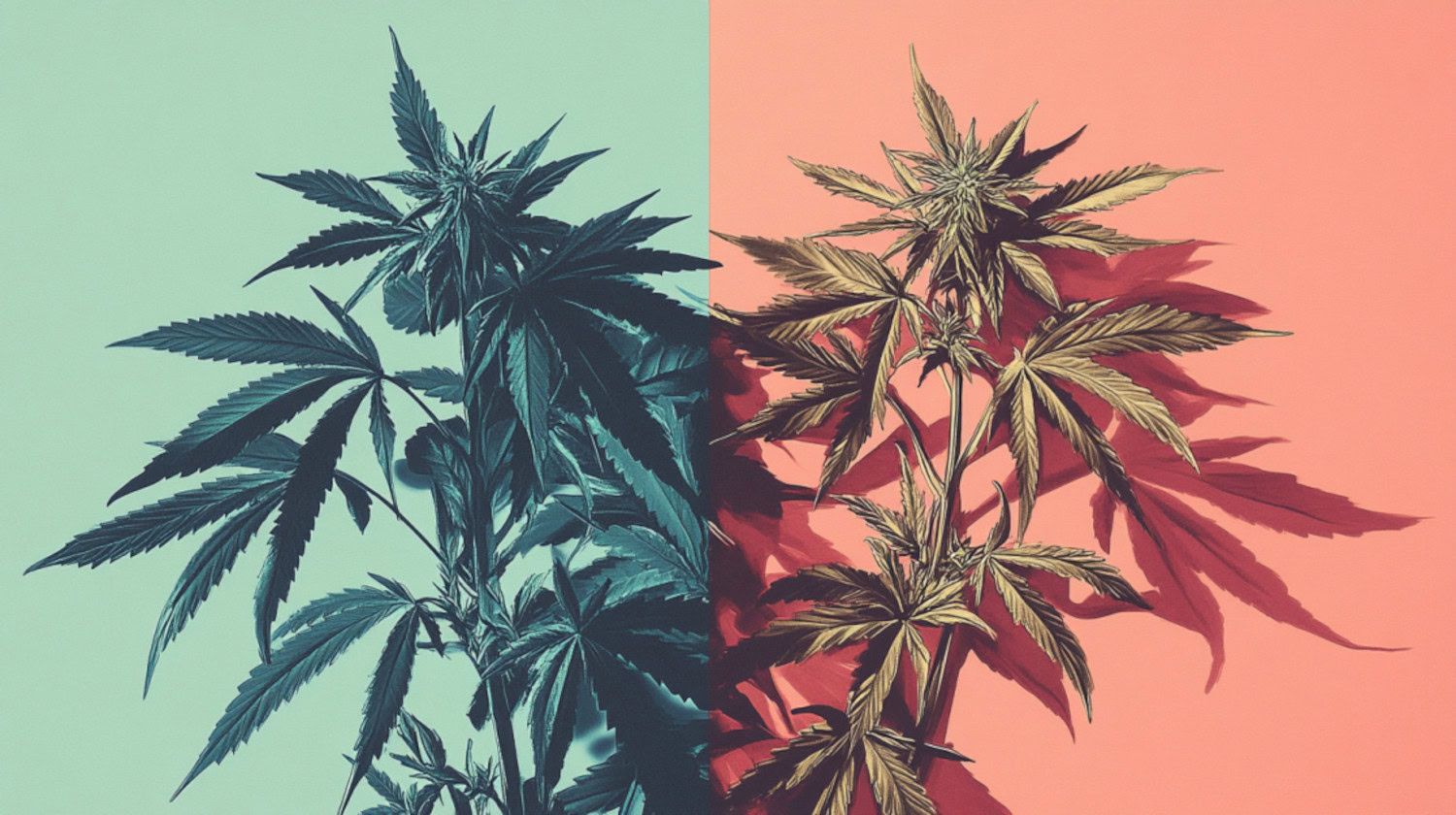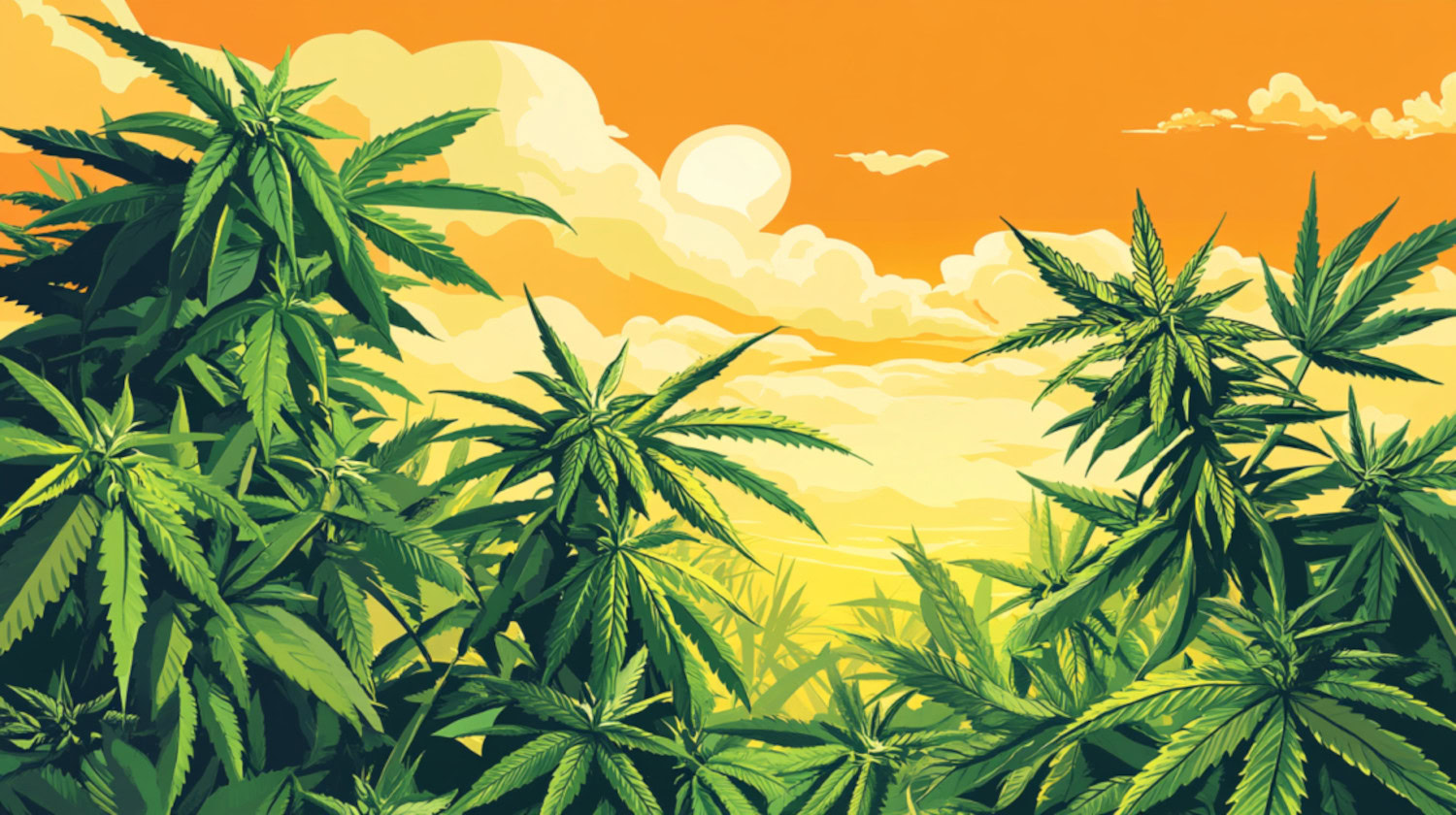In This Article
- Why THC Isn’t the Whole Picture
- What Determines High-Quality Cannabis?
- Enjoying Cannabis Flower
- Having a Great Experience With Edibles
- Experiencing the Potent Purity of Concentrates
- Factors That Impact the Cannabis Experience
- Product Type and Composition
- Environment and Setting
- Accessories and Delivery
- Personal Biology
- What Can Negatively Impact the Cannabis Experience?
- How to Set Up a High-Class Cannabis Experience
- References
Key Takeaways
- A cannabis connoisseur rates cannabis quality beyond THC, focusing on personal factors and plant composition.
- Thoughtful preparation, proper dosing, and a comfortable setting all contribute to creating consistently enjoyable sessions.
- Craft cannabis, typically grown in small batches with greater care, may offer more consistent quality and richer sensory experiences.
Each cannabis strain, or cultivar, contains a broad spectrum of compounds that influence its smell, taste, and feel.
Considering factors beyond THC and CBD, such as terpene profiles, cultivation quality, personal biology, and setting, patients can gain a deeper understanding of the plant and the likely outcome from consuming it. Understanding how cannabinoids, terpenes, and other cannabis compounds interact with the body, along with proper dosing and preparation, may help turn a standard session into a more rewarding experience.
Why THC Isn’t the Whole Picture
The cannabinoid THC tends to dominate most cannabis conversations, and rightfully so, considering its prevalence in the plant. Still, it’s just a part of a much more complex picture. The reality is that hundreds of other minor and major compounds contribute to creating the complete experience of effects.
Focusing primarily on THC minimizes the critical roles of other compounds. While it’s understandable that a consumer would concentrate on a single prominent cannabinoid, doing so overlooks the significant impact of CBD, minor cannabinoids, terpenes, and flavonoids.
For example, terpenes play a significant role in plant life, including, but not limited to, cannabis. These microscopic compounds help shape a cultivar’s aroma and flavor profile.1,2 They also contribute to what’s known as the entourage effect, where the combined impact of multiple compounds may help intensify properties from each compound.3 In short, terpenes may help heighten the effects of the other parts of cannabis in play, including its cannabinoids.
While effects are key to consumer choices, a strain’s aroma shouldn’t be understated. Research suggests that the plant’s smell may be a stronger predictor of buyer preference than THC content.4 Put simply, the more appealing a strain smells to consumers, the more likely they are to purchase it.
By thinking beyond the dominant compound in the plant, consumers can begin to operate like an intermediate or expert-level cannabis consumer, elevating their experience.
What Determines High-Quality Cannabis?
THC levels don’t define high-quality cannabis. Instead, it is determined by the plant, the cultivation method, the extraction process, the products it helps create, and the experience it produces, emphasizing consistent results.
Whether the product is flower, edibles, or concentrates, factors such as plant composition are prime metrics to assess quality. A connoisseur-level approach focuses more on how a product is grown, processed, and formulated than its potency.
Enjoying Cannabis Flower

The saying “quality in, quality out” is common in cannabis. Essentially, you can’t make a top-quality product from anything but the best bud. Premium flower typically originates from small-batch grows, often described as “craft cannabis.”
When shopping like a cannabis connoisseur, look for these factors.
- Grow Settings: Factors vary depending on whether the grow is indoor, outdoor, or hybrid. Many swear by outdoor, organic grow settings. However, others prefer hybrid or indoor grow settings, where cultivators have more control over climate and humidity settings.
- Bud Color: Quality cannabis nugs should be a vibrant green. In some cases, a frosty white layer of trichomes may shroud the plant's vibrancy to a degree. This further indicates that the plant is likely of high quality, as much of the plant’s terpenes and other core compounds are found in these resinous bulbs.
- Pistils: Colorful pistils of orange, brown, and red indicate signs of maturity. While green is usually the key color to look for, these additional color bursts may indicate quality. But buyers should be on the lookout, especially at unlicensed shops, where sometimes low-quality cannabis is dyed to create an array of vibrant-looking flower.
Having a Great Experience With Edibles

Edible quality and experience often vary by production method. For example, infused items made with solventless rosin typically keep more of the plant’s original compounds. These types of edibles normally contain nuanced effects and fuller flavors, often accompanied by a “weed” taste. Similarly, live rosin extracts from flash-frozen cannabis preserve the freshly harvested terpenes, giving some edibles the same weed taste as rosin.
Edibles formulated from distillate or isolate tend to lose the plant flavor. However, these offerings may contain a trace amount of a plant’s profile (distillate) or just one compound, often CBD or THC (isolate).
Experiencing the Potent Purity of Concentrates
Concentrates play a role in edibles, but they’re also a category of their own. Numerous types of extracts and concentrates offer dab enthusiasts several options.
Rosin and live rosin are both popular types of concentrate, utilizing solvent-free extraction to deliver a flavorful, full-plant experience. The best of the bunch, which extends to hash and other solventless extracts, are often categorized as 5- or 6-star extracts.
Some look down on solvent-based extraction for using chemicals during production, though they’re removed before the product is sold. Some others may push back on the notion. claiming there is a time and place for all types of extracts.
For example, when a brand wants to produce high yields, create particularly high potency concentrates, or create various products from a single source, extracts like butane hash oil (BHO) remain high-quality options. However, they can lose the plant’s flavor and aroma, which is kept by solventless methods, reducing the whole-plant experience.
Factors That Impact the Cannabis Experience
The cannabis experience can shift significantly with a range of factors influencing the outcome, including product type, consumption method, setting, and consumer biology.
Product Type and Composition
Different consumables offer various onset times and effect durations. For example, edibles or vapes made with rosin often contain fuller flavors and more nuanced effects. This occurrence is often due to the methods that preserve minor cannabinoids and terpenes.
Conversely, distillate-based products may contain higher concentrations of THC. However, they also tend to lack compound complexity, which some believe limits the experience due to the presence of a single or small group of compounds.
Additionally, products should be third-party tested to confirm their quality. If a product does not provide this information on its website or through a QR code on the packaging, consider purchasing an alternative item.
Environment and Setting
Social contexts, sensory stimuli, and even time of day can all shape how a session unfolds.
Environment and internal mindsets both affect how cannabis is experienced. Comfortable settings may produce more positive effects. Meanwhile, consuming in stressful or unfamiliar environments could increase feelings of anxiety, paranoia, or discomfort.
Accessories and Delivery
Many cannabis accessories intend to make the experience simpler or more elevated via smoother hits and improved flavor. Items like temperature-controlled vapes, high-quality dab rigs, and grinders that produce an even ground cannabis are all examples of helpful items to consider. Still, consumers need to remember that their delivery methods and types of cannabis product consumed will change the effect and duration of the experience.
Personal Biology
Everyone processes cannabis differently, with genetics playing a role in how cannabinoids are felt and how long the effects last. Studies suggest that results can vary based on biological sex and ancestry. Additional factors, such as liver health, can affect how long cannabis stays in the body.5
What Can Negatively Impact the Cannabis Experience?

A connoisseur mindset includes knowing the risks of unwanted outcomes. Important points to keep in mind include:
- Overconsumption: Taking too much, especially with edibles, where effects can increase threefold after metabolization in the liver, can lead to short-term adverse effects, including anxiety, nausea, paranoia, sweating, and more.
- Health Interactions: Cannabis may interact with medications or impact existing medical conditions. Consult with a medical professional to assess the best options.
- Mismatched Expectations: Understanding dosage and plant profiles can help consumers best understand what to expect from a product. Still, other factors may alter the likely outcome.
How to Set Up a High-Class Cannabis Experience
Creating a connoisseur-level session includes thoughtful planning, product quality, and a setting that promotes comfort and exploration.
- Quality Products: Premium, third-party tested products tend to deliver the best experiences, aromas, and flavors.
- Prepare the Environment: Consider what puts a person most at ease. Often, that’s a clean, relaxing environment where they can enjoy themselves.
- The People: Friends, loved ones, and other chill, respectful people who want to have fun are always ideal for an elevated experience. This goes hand-in-hand with a supportive, friendly environment.
- Clean, Functioning Equipment: Clean, well-maintained gear is always a plus. Regular maintenance helps preserve product flavors while providing the smoothest consumption options possible.
- Promote Education: Discussing terpenes, origins, and extraction methods with engaged people helps inform them about the plant without turning a cannabis session into a lecture. While some may love to learn more while consuming, others might not be in the best position to absorb higher-level knowledge. Read the room and share the exciting information if someone appears eager to learn.
References
- Ferber SG, Namdar D, Hen-Shoval D, et al. The "Entourage Effect": Terpenes Coupled with Cannabinoids for the Treatment of Mood Disorders and Anxiety Disorders. Curr Neuropharmacol. 2020;18(2):87-96. doi:10.2174/1570159X17666190903103923 ↩︎
- Finlay DB, Sircombe KJ, Nimick M, Jones C, Glass M. Terpenoids From Cannabis Do Not Mediate an Entourage Effect by Acting at Cannabinoid Receptors. Frontiers in Pharmacology. 2020;11. doi:https://doi.org/10.3389/fphar.2020.00359 ↩︎
- McPartland JM, Russo EB. Cannabis and Cannabis Extracts. Journal of Cannabis Therapeutics. 2020;1(3-4):103-132. doi:https://doi.org/10.1300/j175v01n03_08 ↩︎
- Plumb J, Demirel S, Sackett JL, Russo EB, Wilson-Poe AR. The Nose Knows: Aroma, but Not THC Mediates the Subjective Effects of Smoked and Vaporized Cannabis Flower. Psychoactives. 2022; 1(2):70-86. https://doi.org/10.3390/psychoactives1020008 ↩︎
- Zhu J, Peltekian KM. Cannabis and the liver: Things you wanted to know but were afraid to ask. Can Liver J. 2019;2(3):51-57. Published 2019 Aug 27. doi:10.3138/canlivj.2018-0023. ↩︎
The information in this article and any included images or charts are for educational purposes only. This information is neither a substitute for, nor does it replace, professional legal advice or medical advice, diagnosis, or treatment. If you have any concerns or questions about laws, regulations, or your health, you should always consult with an attorney, physician or other licensed professional.




